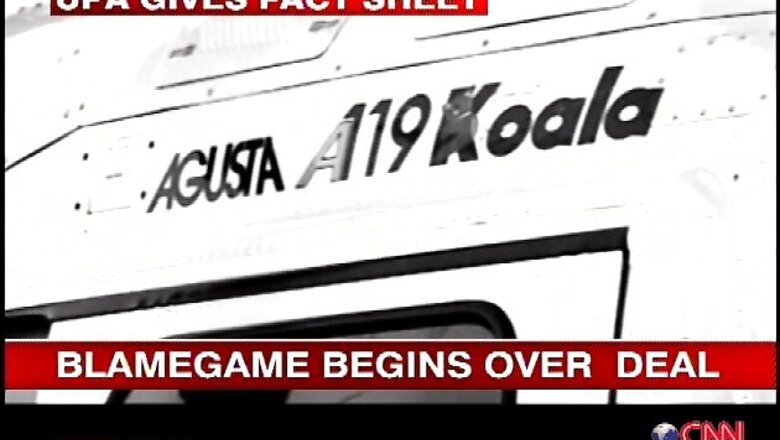
views
New Delhi: India will make a fresh request to Italy for information on alleged kickbacks received during the supply of AgustaWestland's VVIP helicopters, sources said on Friday. The Italian probe report into the chopper deal has explained how the kickback money in the deal reached the cousins of former Air Chief Marshal SP Tyagi.
According to the report accessed by CNN-IBN, Haschke, the key middleman, contacted Sanjeev Juli Tyagi, cousin of SP Tyagi, through other accused Carlo Gerosa.
Haschke further said in his statement that he met SP Tyagi along with his cousins and took other AgustaWestland representatives Zappa and Ciampi for the meeting. The meeting took place in February 2005, just when SP Tyagi had taken charge as chief of Air Force.
A total of four lakh euros were sent through Haschke and Gerosa for mediation in India and advocate Khaitan was the person responsible for transferring of funds to the Tyagi family. The report further said that money exchanged hands in India and Italian cities of Lugano and Cascina Costa.
However, Khaitan issued a statement saying he was not involved in the deal. "I am not involved in this deal. I have not helped these people," he said.
Here are some excerpts from the probe report which deals with statement given by an accused named as ADR:
"I told Engineer ORSI that the relations which I had with the TYAGI family were very strong and that because of this, the Air Chief Marshal had met Mr. ZAPPA. At that time, there was only the 'Request for information', I, in repeated meetings, that this would be almost certainly a tender and I, through my important contacts in India, would have worked to get it awarded to Agusta. Already in the TYAGI-AIR CHIEF TYAGI meeting, one of the topics was that of the limit of 18,000 feet of altitude which excluded particularly all competitors except for the French company 'eurocopter' which anyway did not have a VIP model available."
Meanwhile, the government of India issued a fact sheet on the chopper deal on Thursday:
1. In August 1999, the IAF which is responsible for carrying out VVIP communication task, proposed the replacement of Mi-8 VIP helicopters due to severe operational constraints, such as, inability of Mi-8 to operate at night and in adverse weather, inability to operate safely at places in elevation beyond 2000 meters etc. IAF felt the need for the replacement of Mi-8 helicopters as they were completing their total technical life.
2. A global RFP was issued in March 2002 to which 4 vendors responded. The Technical Evaluation Committee shortlisted 3 helicopters and accordingly flight evaluations were conducted. Since, EH-101 of M/s. AgustaWestland was not certified for an altitude of 6000 meters, it did not participate in the flight evaluation. The Russian helicopter Mi-172 could not comply with 7 mandatory Operational Requirements (ORs). After flight evaluation, EC-225 of M/s. Eurocopter, France was found suitable for acquisition.
3. On November 19, 2003 a meeting was taken by Principal Secretary to PM on this subject. In the meeting, Principal Secretary observed that his main concern was that the framing of the mandatory requirements has led us effectively into a single vendor situation. It was also noted that PM and President have rarely made visits to places involving flying at an altitude beyond 4500 meters. In the meeting it was decided to make the mandatory requirement for operational altitude 4500 meters. The higher flying ceiling of 6000 meters, and a cabinet height of 1.8 meters could be made desirable operational requirements. It was observed that with these revisions, several helicopters which otherwise met all requirements but had been rejected due to the altitude restriction, would now come into the reckoning.
















Comments
0 comment